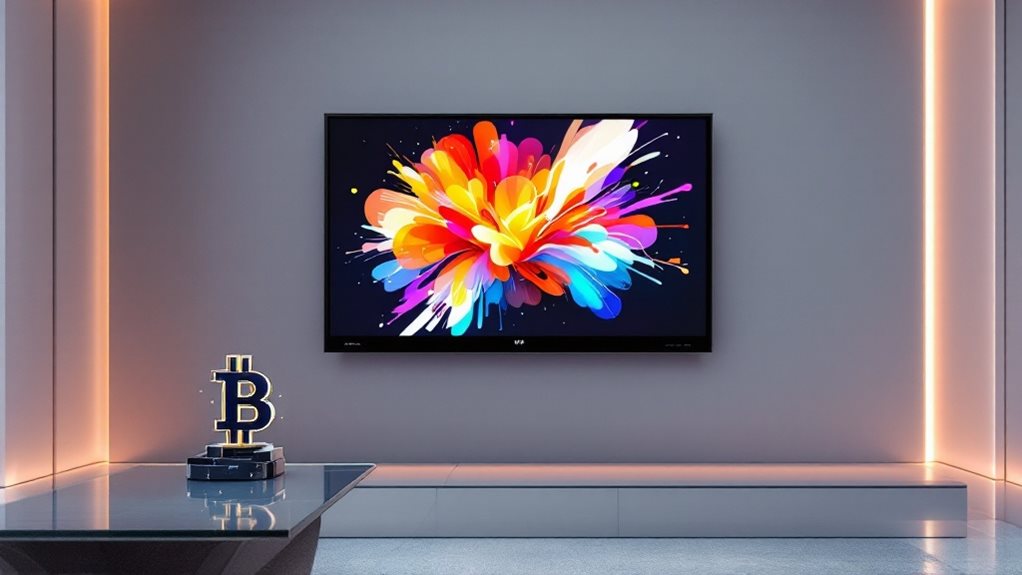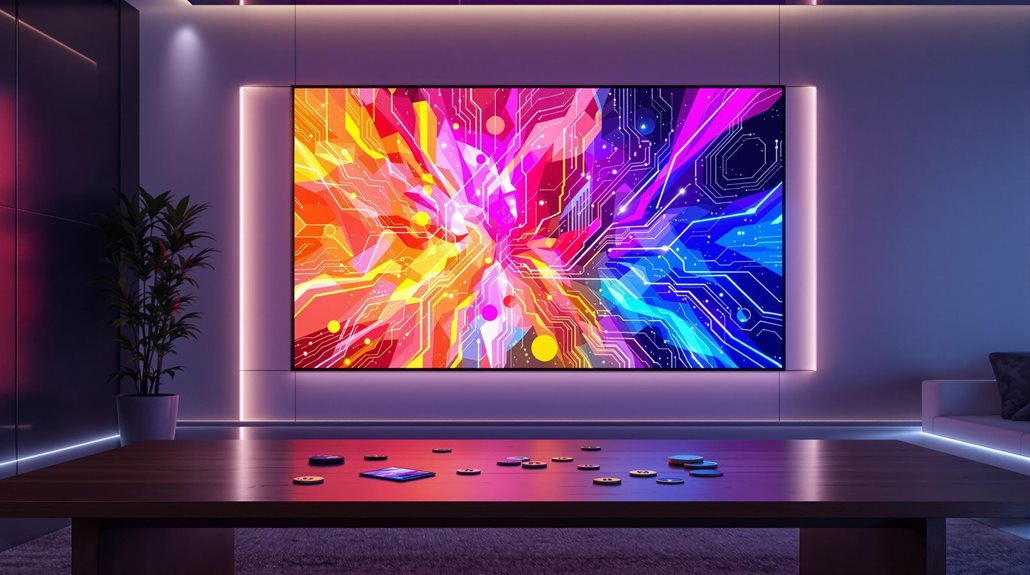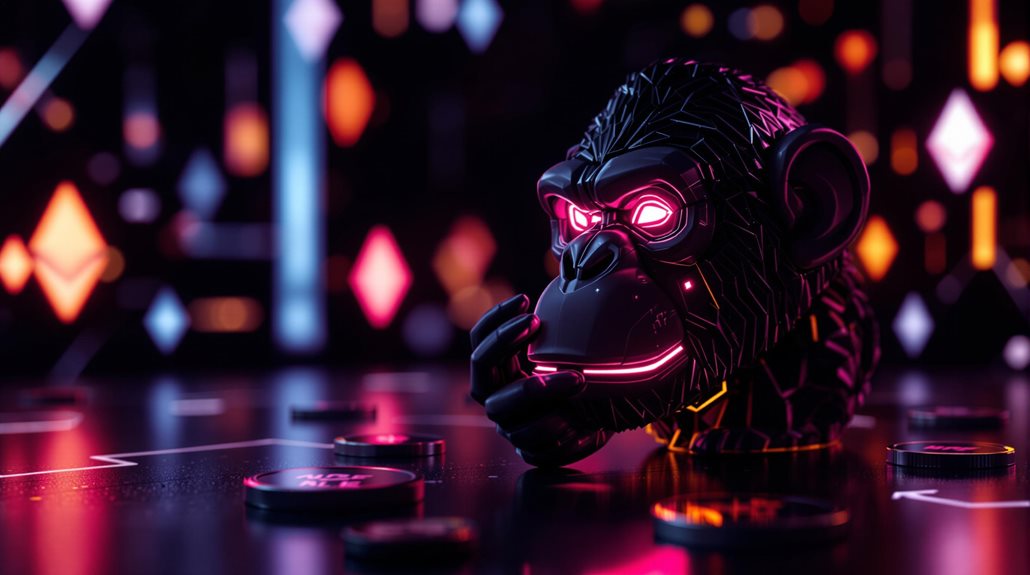An NFT (non-fungible token) is a unique digital asset that represents ownership of something specific, like artwork, music, or videos. It's stored on a blockchain, which acts like a digital record book that can't be changed. Unlike cryptocurrencies such as Bitcoin, NFTs aren't interchangeable because each one has distinct characteristics and value. The NFT market has grown rapidly as more people explore digital ownership and collecting opportunities in this emerging technology.

NFTs, or non-fungible tokens, are unique digital assets that represent ownership of specific items or content on the blockchain. Unlike cryptocurrencies, which can be exchanged on a one-to-one basis, NFTs aren't interchangeable because each one has distinct characteristics and a unique identification code. They're recorded on a blockchain, which provides an unchangeable record of ownership that anyone can verify. Gas fees are required when minting or transferring NFTs on most marketplaces.
The process of creating an NFT is called "minting." When someone wants to make an NFT, they upload their digital file to an NFT platform, which creates a blockchain entry for that file. This entry includes significant information like who created it, who owns it, and other specific details about the item. Each token receives a unique identifier that links directly to a specific blockchain address. It's crucial to recognize that creators need to own the copyright and intellectual property rights of whatever they're turning into an NFT. The ERC-721 standard established the framework for creating and managing NFTs on blockchain networks.
NFTs have several key features that make them special. They can't be divided into smaller parts like some cryptocurrencies can. Each NFT is completely unique and different from all others, making it possible to prove which one is the original. They can represent all kinds of things, from digital art and music to videos and even real-world items. Some NFTs can even be combined to create new, unique tokens. The market has seen incredible growth, with NFT trading attracting 250,000 monthly users on OpenSea alone.
The buying and selling of NFTs happens on specialized online marketplaces. When someone buys an NFT, the ownership transfers between digital wallets, and the transaction is recorded on the blockchain. Many NFTs use smart contracts, which are automatic agreements that can do things like guarantee creators receive royalties when their NFTs are resold. The price of NFTs isn't fixed – it changes based on how many people want to buy them and how many are available.
The NFT market has been growing rapidly, and experts predict it will continue to expand. Current projections show that the global NFT market could reach $407.7 billion by 2034. This growth is driven by increasing interest in digital ownership and the unique possibilities NFTs offer for creators and collectors.
The technology behind NFTs makes it possible to verify authenticity and ownership in ways that weren't possible before, creating new opportunities for digital and physical asset ownership in the modern world.
Frequently Asked Questions
How Do I Protect My NFT Collection From Theft or Fraud?
NFT collectors use several security measures to protect their digital assets.
They're storing NFTs in hardware wallets that stay offline and using two-factor authentication for accounts.
They're also checking marketplace URLs carefully and verifying transaction details before signing.
Many collectors add watermarks to their artwork and monitor for unauthorized use.
They're keeping private keys secure and using VPNs for transactions.
Some even get NFT insurance for valuable pieces.
Can NFTS Be Used for Physical Items, Not Just Digital Art?
Yes, NFTs can be linked to physical items. Companies are using NFTs to connect digital tokens with real-world products like sneakers, clothing, and artwork.
These "physical NFTs" often use QR codes or special chips to prove an item's authenticity. For example, Nike and Adidas have created NFTs that come with actual shoes and clothing.
Luxury brands also use them to fight counterfeiting by providing a way to verify genuine products.
What Happens to My NFTS if the Marketplace Platform Shuts Down?
If a marketplace platform shuts down, NFTs aren't lost because they exist on the blockchain, not on the marketplace itself.
It's like having a baseball card – if one card shop closes, the card is still safely in its owner's possession.
NFT owners can access their tokens through their crypto wallets and trade them on other marketplaces.
The blockchain continues to prove ownership, regardless of which platform originally sold the NFT.
Are There Environmental Concerns Associated With NFT Minting and Trading?
Yes, NFTs have significant environmental impacts.
Creating and trading NFTs requires lots of computer power, which uses a lot of electricity. When NFTs run on Proof-of-Work blockchains like Bitcoin, they create large amounts of carbon emissions. A single NFT transaction can produce as much CO2 as driving a car for 800 km.
However, newer blockchain systems like Proof-of-Stake use much less energy, cutting power consumption by nearly 100%.
Which Cryptocurrency Should I Use to Start Buying NFTS?
Different cryptocurrencies offer unique benefits for NFT buyers.
Ethereum is the most widely used, with the largest marketplace selection on platforms like OpenSea.
Solana's gaining popularity due to its fast, cheap transactions.
Polygon provides a middle ground with lower fees while staying compatible with Ethereum marketplaces.
Tezos stands out for its eco-friendly approach and growing digital art scene.
Each option has its own marketplaces and communities supporting NFT trading.





